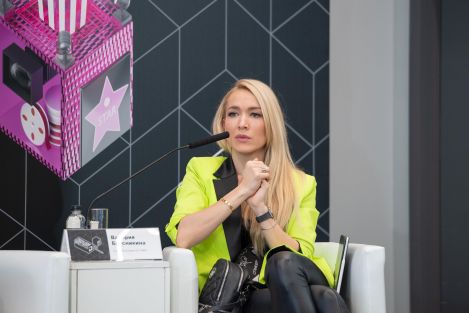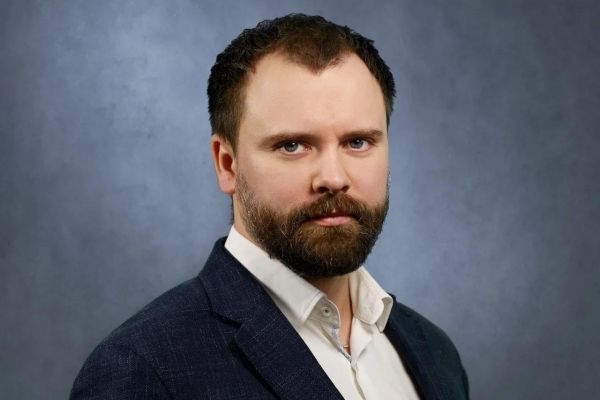
Valeria Brusnikina, manager of the IT projects portfolio of the IPChain Association, answers questions from foreign media
News

25 April 2021
On April 26-27, the Technopark of the Skolkovo Innovation Center will host one of Russia's largest forums on intellectual property and creative industries — IPQuorum 2021: Tech for Content. Pavel Bryzgalov, speaker of the Forum and Deputy Director for Product Development of the investment and Construction holding A101, spoke about how technologies affect the design, change the real estate market and transform the needs of home buyers.
Technology and money
According to the forecasts of the analytical company MarketsandMarkets, the generative design market will grow from $ 111 million in 2018 to $ 275 million by 2023, and the average annual growth rate will be 19.9%. We are talking about design technologies that combine the use of digital models and massive databases, which allow us to take into account many environmental parameters even at the stage of developing primary documentation: from the nature of the soil to traffic flows and the needs of the target audience. In fact, the design is automated, partly given over to artificial intelligence.
Now the key digital technology that allows you to design buildings is BIM-design. This is a combination of a drawing and a certain information database. For example, using a digital model of a house, an engineer can evaluate the structural features of the building and the thickness of the floors, taking into account the load-bearing capacity of the soil.
At a more detailed level, digital technologies allow you to digitize each element of the drawing. For example, a window block is entered into the database according to the main parameters: density, material type, cost per linear meter or cubic meter.
The three-dimensional model allows you to estimate in advance the engineering parameters of the future building. But the question remains: how much will it cost and when will the funds be recouped?
Of course, upgrading equipment, buying software, and training employees requires" at the moment " significant costs. The cost of organizing one workplace for a designer is about 300 thousand rubles for a full set of necessary software. Training can be carried out either at advanced training courses, or in your own competence center created within the developer. We followed the second path. In general, training and equipping a group of 15 people costs about 5.4 million rubles.
The costs are recouped by preventing errors in the design process, conducting tender procedures, and implementing the project. In general, only by reducing losses due to errors in documentation, developers can save 0.3-1.5% of the cost of construction. In addition, the implementation time of the entire project is reduced by 12-15%, which reduces the cost of financing the project.
The payback period depends on the effective load of the team, in our case we can talk about a period of 6 months. It should be noted that the larger the developer's project portfolio, the cheaper it is to implement BIM. But it should be noted that the result is possible only with the condition of digitizing internal business processes, if you simply purchase software and send people there will be no effect.
The efficiency of using digital models can be increased by including information about the cost of materials in databases.
Now the cost of the house is estimated by the estimate department, but it will take him a few days to do this, and with some margin of error. At the same time, if the material of the facade changes during the approval of the layout, the procedure has to be carried out again. Digital technologies could solve this problem in a couple of clicks and in a few seconds.
A serious help for this would be the development of databases at the federal level, for example, by specialized research institutes. Their use would make it possible to change both the approach to construction and the final cost of apartments. Architects and developers would be able to find the necessary balance between the appearance of the future house and its optimal price.
Designing neighborhoods with AI
If we want to design not only one house, but also several blocks, then parametric design will help us. The algorithm can automatically produce an effective option for the placement of a building in terms of technical and economic indicators, apartment design, and other parameters. As a unit of measurement, you can take a section, an apartment, and an individual building plan. The square footage of apartments, their typology, and engineering issues will be taken into account.
Parametric and generative technologies are so important because the housing industry is changing rapidly: projects, even in economy class, are becoming more individualized and adapted to the needs of residents.
However, digital planning and design tools are still too expensive. The cost of Big Data even in one district of Moscow reaches 24 million rubles. For this money, you can order a sociological study on the scale of the entire capital. It is hoped that with the development of technology, the price of data will decrease.
Residents ' technologies
The demand for technological efficiency today comes not only from architects and designers, but also from future residents. The main trends in this direction are: safety, healthy lifestyle and environmental friendliness.
Until a few years ago, electronic access control systems were only available in business class homes. Now, even in the mass segment, you can easily find an IP video intercom, contactless access control, a fenced yard. For the Russian consumer, when choosing housing, the key needs remain for comfort and security — in this he is similar to the residents of Singapore, China, and South Korea, who, by the way, develop most of the "smart" security systems.
In the near future, the "filling" of our homes will become more sophisticated due to telemetry and video analytics. Thanks to the same Face ID or Bluetooth tags, we don't have to dig in our pockets in front of the entrance door or shift a bag from one hand to the other in the elevator: it will remember which floor we live on.
At the same time, safety obviously begins with a healthy lifestyle, so each resident can have their own individual training program on the workout area-like in a fitness club. Future residents are not satisfied with randomly assigned sports facilities. It is important for them that the infrastructure is digital and well thought out.
Finally, it is important for people that the developer takes care of the natural complex. Here, eco-friendly technologies come to the rescue, such as a drainage system that collects and purifies rainwater for further use, and solutions that provide access to natural areas in an eco-format, but without harming nature, and other biotechnologies. Such things, on the one hand, make the environment comfortable for residents, and on the other — increase confidence in the developer.
Ultimately, the use of digital technologies, both in the design and in the form of "smart home" solutions, allows you to create comfortable, convenient and safe housing primarily for people. This is what the buyer sees with his eyes and touches with his hands, and this is what he is willing to pay for.